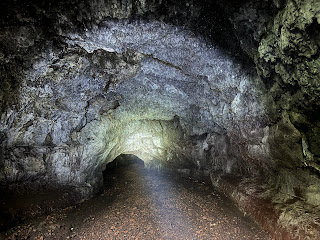The Hana Lava Tube, also known as Ka'eleku Cave, is the main lava tube cave on the Road to Hana in Maui, Hawaii. It's the largest lava tube in Maui and is a must-see for those interested in geology and caves. The tube is about 1/3 mile long, and visitors can take a self-guided tour that takes about 40 minutes. The rest of the tube is off-limits.
The Hana Lava Tube was formed approximately 960 years ago when molten lava spewed up from underground and flowed toward the ocean. The tube contains rare lava stalagmites, and stalactites that almost seem to be dripping chocolate from the cave ceiling.
Road to Hana
I like the word “Hana”, or Japanese flower, from my tropical stay in Okinawa where hibiscus was everywhere.
The hibiscus, also known as akabana, is the official flower of Okinawa Prefecture, Japan. The hibiscus symbolizes the island's year-round blooming and is used in many products.
The hibiscus is a strong, fast-growing tree that can reach 10 feet tall and has straight branches used as hedges around homes.
For the same reason, hibiscus is often used in graveyards, family tombs. The hibiscus is also known as "After Ages Flower" (Gusohbana).
Hana is also a girl's name with Spanish origins that means "happiness" or "flower". It has many different meanings in different cultures, including:
- Japanese: "Flower" or "flower blossom"
- Hawaiian: "Craft" or "work"
- Maori: "To shine", "glow", "give out love", or "radiance"






















No comments:
Post a Comment
Please be polite.